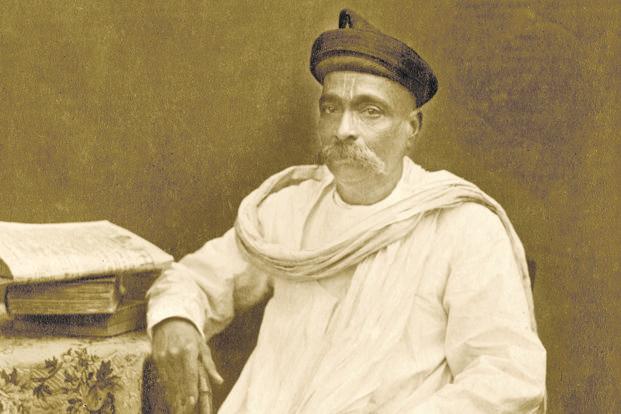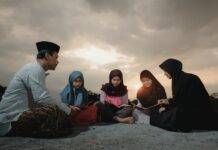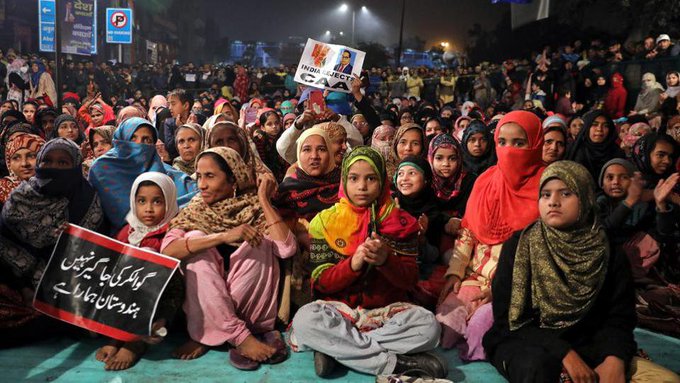Education is the most important aspect of the developmental process of a person. It enables the person to know the right conduct and equips him/her to differentiate between right and wrong. Equally important is the fact that women receive quality education at par with the education received by the male section of the society. When the female section of society is educated, the future family becomes educated. Additionally, it also means smaller families and better family planning. This shows the immense importance of educating women and its impact on the society and nation. Despite this, a large number of women were prohibited from receiving any type of formal education as it was believed that they are suitable for doing the household chores and looking after the family and children only. In this paper, we will be focusing our attention on how the education for women came through the various struggles and oppositions it faced during the colonial period and how this shaped the current formal education received by females.
Women’s Struggles in the Pursuit of Education
Even though girls desired to be educated as their male counterparts, yet they were prohibited from doing so. It was a popular belief that educating a girl was bound to undermine her feminine qualities which would ultimately bring disgrace to the family. This led to opposition of any efforts by the Britishers to educate Indian women. In addition to this, activists such as Bal Gangadhar Tilak also voiced their opinions against the education of the girls stating that the right place of the women was at their homes serving their families and educating them would incite them to run away from home.

In addition to this, the women faced barbaric and immoral practices at the hands of society. This included the practices of sati or widow burning. It was abolished by the Britishers who called this process a “civilising mission”. What is important to note here is that the oppressive treatment met out to women was justified through the scriptures and various ritual practices, which was used by the Britishers to label the entire cultural tradition of the country as oppressive and unfree. Another problem faced by the girls was the rampant system of child marriage which was prevalent throughout India. Women’s education was regarded as unnecessary, dangerous and unorthodox due to the prejudice against it. This was followed by the purdah system which was imposed on the women along with the belief that education of women was a total waste of money and resources and it would cause additional cost to the family without any returns. It was also held that educating a woman would lead to lack of help in the household and this was another reason not to send girls to school.
The Initiation into Schooling
The efforts made by various reformers with the help of Britishers started to show positive results when permission was given to the Christian missionaries to operate and impart education to both men and women after the Charter act 1813. The first school to be opened exclusively for girls was started by Robert May of London Missionary Society (LMS) in Bengal region of Chinsurah in 1818, after which various schools were opened for girls by various pioneers. Mary Ann Cooke was regarded as amongst the first missionary women to open a school under Church Missionary Society (CMS) in order to promote women education. They received the patronage of respectable Hindu men and were staffed by Brahmin pundits. The curriculum included reading, writing, spelling and needlework. The first boarding school which was opened for girls was with the initiative of CMS in Tirnuelveli in 1821. However, one thing to observe here was that even though initiative was taken by the missionaries, yet the number of enrolment in these schools did not reflect the attitude of the Indian towards women education. Girls belonging to respectable Hindu families were not sent to these schools for the fear of religion conversion. The girls who attended these schools were either Christian or belonged to the lower caste who did not got the opportunity to receive education in any of the indigenous schools and their education was ignored both the upper caste as well as by the government. There were various efforts on individual basis by people who opened schools for girls. The education of these girls belonging to the lower caste was taken into consideration by an eminent person Jyotiba Phule who realized the importance of their education and established school for them in Poona in 1851. But, a radical change came in the education of women after the establishment of Bethune School during the period of 1850s- 1920s. This also led to the increase in awareness amongst various scholars who realized the importance of women education, raised their voiced and demanded it (Basu, 2005, pp. 185- 188).
Educating Girls from Different Religions
Apart from education of the girls belonging to Hindu community, attention was also paid on educating the girls belonging to other minority religions. Amongst the first to provide education to their girls were the Parsis in Bombay. Since the 1840s, the Parsi girls were secretly being educated in their homes. Literacy was highest among the Parsi girls. This was followed by the movement led by the Brahmo Samaj in Bengal for female education.The main feature of women education was that the girls were educated to make good housewives and mothers.
Various efforts were made in different sects and communities to promote education of girls. This included the efforts made by the Prarthana Samaj in Maharashtra and Gujarat, the Theosophical Society in Madras under the chairperson-ship of Annie Besant and the Arya Samaj and Jullundar Samaj in North India. Muslims are the largest minority in India. However, education of Muslim girls also saw many struggles. Eminent scholar Sir Syed Ahmed Khan, who on one hand promoted Western education for Muslim boys and on the other, was against any type of education for Muslim girls. He regarded women to be emotional and irrational and inferior to men intellectually and physically.But, there were pioneers of girls’ education, one of them being Badruddin Tyabji, who held that education was extremely important for girls and lamented that none of the schools in Bombay taught English. There were many female patrons for education of Muslim girls including Sikander Begum, Shah Jahan Begum, and Sultan Jahan Begum among others who served as a role model for other women as they themselves were highly educated. Similar efforts were seen for promoting education for women when “The Mahila Samakshya project(education for women’s equality) was launched in India with the assistance of the Government of Netherlands in 1992 to promote women’s equality and empowerment through education.”.
Educating the Dalit Woman
The Dalits are also known as Harijans or the scheduled castes and they have faced discrimination in every aspect of their lives in the hands of the upper castes. They have been prevented from entering educational institutions like schools, colleges and hence, been prevented from accessing education. The Dalit girls had to face ‘double discrimination’ in the sense that they were not only discriminated for their gender but also for their caste, and therefore, were often discouraged from attending schools and colleges which were distant and male dominated. Not only this, they were also known as the ‘slave of the slaves’ meaning that they served to their husbands who were Dalit and were slaves to the upper castes and this further made it difficult for them to receive education.
Even if they received the opportunity to go to the school to receive education (which was extremely difficult, given the circumstances), they used to face the worst kind of discrimination by everyone around them. The schools used to promote the social hierarchy under which the students belonging to the lower caste were made to sit separately. The entire classroom was divided into rows in which the students used to be seated according to their caste and it was the basis for determination of the capability and rank of the students with the upper caste sitting in the front rows and the lower caste sitting in the last rows or even outside the classes being considered the least intelligent. Even the teachers, who were often Brahmins or belonging to the upper castes, had prejudice against the students belonging to the lower caste. The system of teaching was based on the banking model in which the teachers used to merely teach the students without any discussion, thinking of the students as containers to be filled with knowledge. This meant that there was no participation on the part of the students in teaching learning sessions. On top of that, any doubts asked by the student were not attended to and if that student belonged to the lower caste, then they were humiliated by the teachers. In addition to this, separate records were maintained for all the students belonging to lower caste to provide them with grants, scholarships, concession, reservations etc. They were made visible to other students through roll calls which made them feel insulted. They also faced discrimination while being graded and only upper caste students were motivated to do well. The Dalit girls responded to such biases by either rebelling or submitting or by hiding their real identity. All these situations added up to demotivate Dalit girls from entering into schools to receive education.
Looking at Where We are Today

Education has been formed and reformed since its inception. Women education faced a lot of difficulties in form of oppression and opposition from the upper caste males for the fear of women becoming too modern and educated to continue with their duties for their families and homes. It has come a long way to be what it is today. Various movements and associations for women’s education helped towards this cause. Political movements by Mahatma Gandhi like the Non Cooperation Movement encouraged women to move out of their homes and thus provided them the much needed mobility. Associations such as All India Women’s Conference (AIWC), the Women’s India Conference (WIC), and the National Council of Women (NCW) held conferences to discuss various issues of women such as child marriage, purdah system etc. and how to do them away to promote education for women. The nature of formal education is quite different as compared to the past. There is a general increase in awareness amongst women with respect to their education. They have realized the importance of their education in the well-being of their family, society, nation and their own self. In addition to this, the whole hearted support of the states and the central government has acted as a stimulus towards strengthening the women education. With the introduction of various schemes such as Sarva Shiksha Abhiyan, Beti Bacho Beti Padhao, Sukanya Samriddhi Yojana among others, people have been encouraged to send their wards, especially girls to school. To support these schemes, the availability of hostel facilities for those who come from far off places and scholarships for the students who are financially weak has helped towards this cause of educating the girl child.In addition to this, the government has taken initiatives to open more schools for girls especially in the rural areas so that the girls can reach the school without travelling too much. The success of the women in the formal sector has contributed to a great extent to improve the education for them. This also shows that the image of women is no longer confined to household work as they are now coming out and excelling in many walks of professional life.
In retrospect, it can be said that women’s education is very essential for the overall wellbeing of the society. When a woman is educated she ensures that her children also become educated. An educated women becomes well aware of her rights which in turn ensures that she is not exploited at the hands of her employer at work and by her family at home. Thus, it becomes all the more essential to impart quality education to a girl child.
Mudita Pant is pursuing her Masters from TISS/Mumbai.











